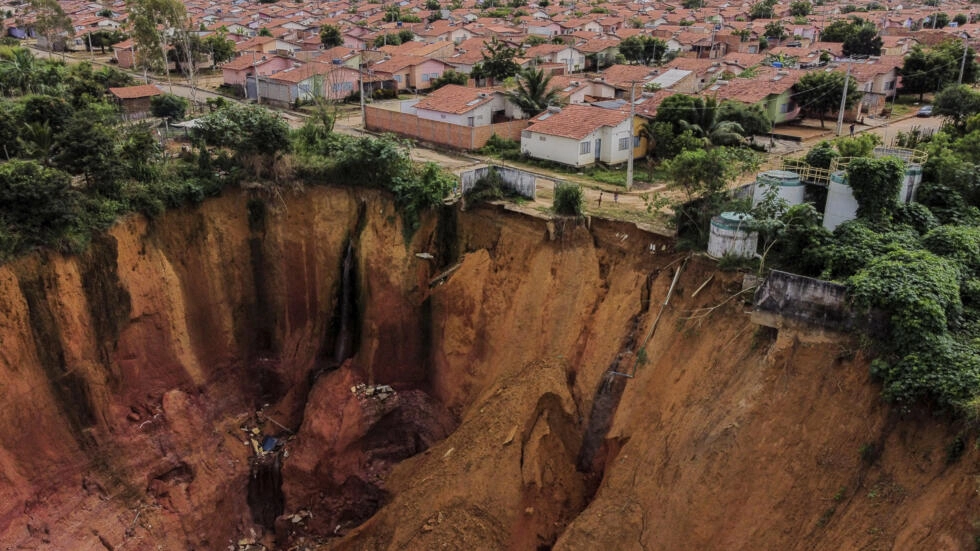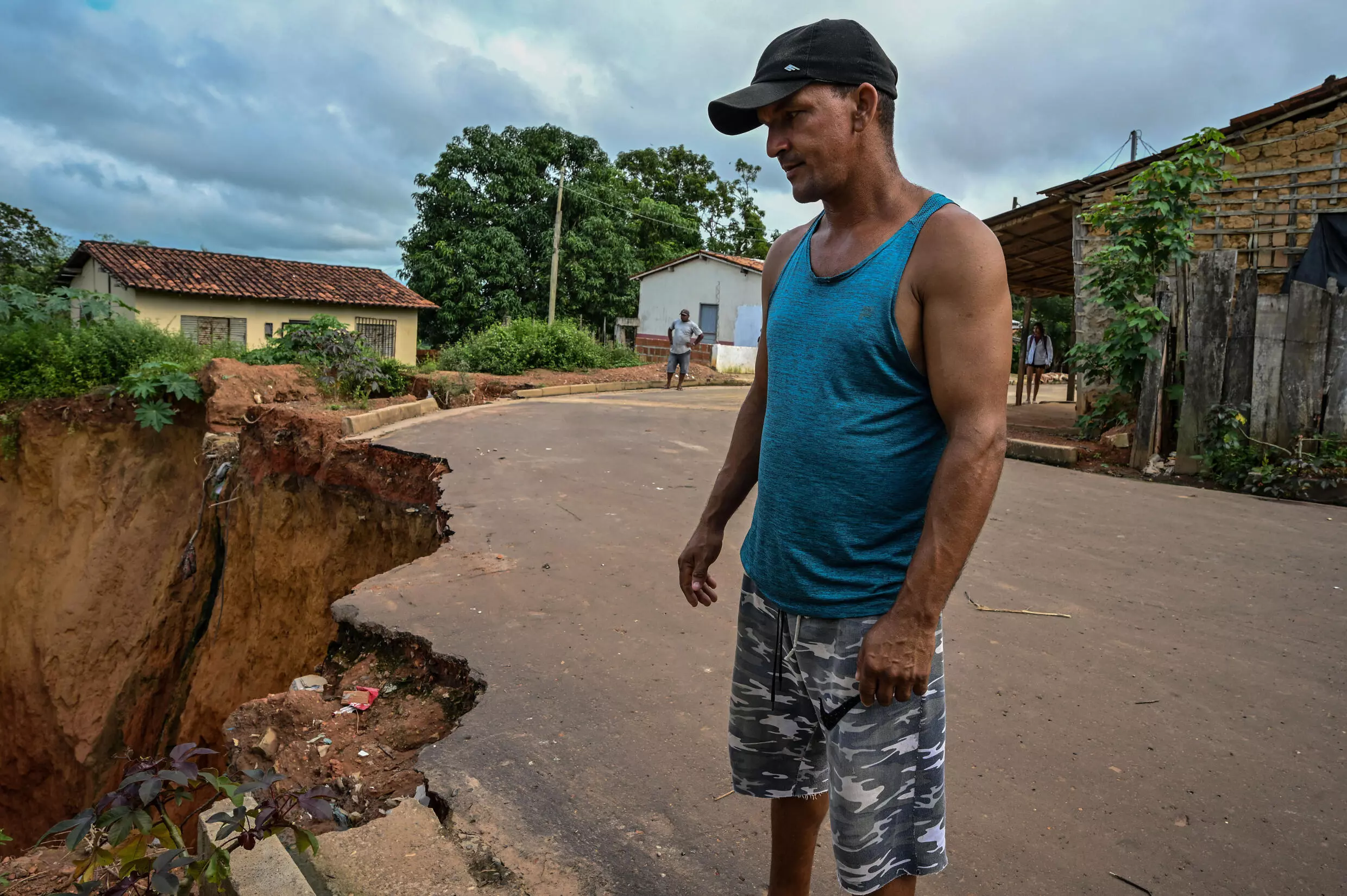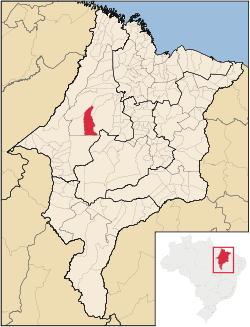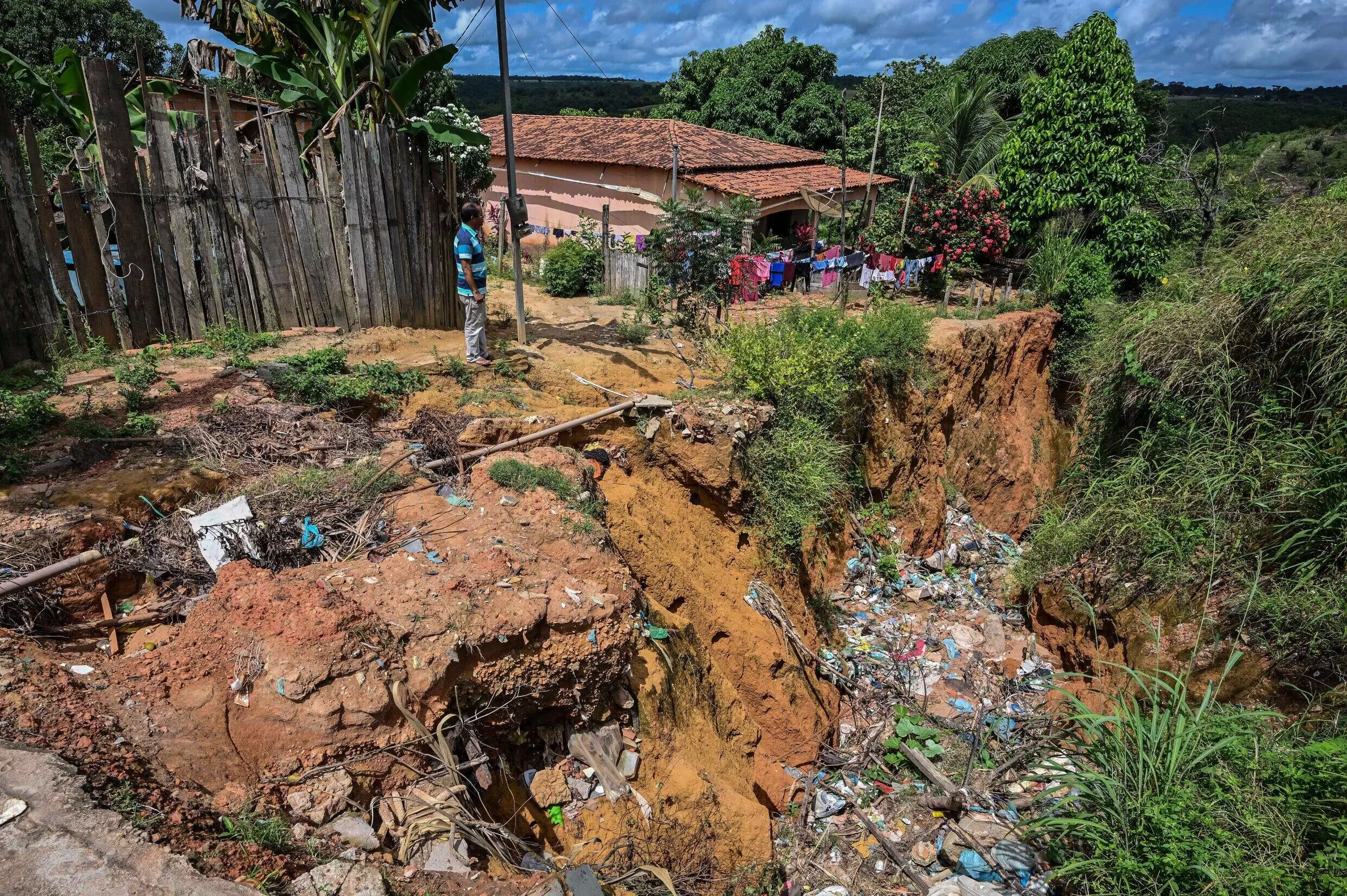A few steps from the cliff, Deusimar Batista hangs out her laundry in the sun.
Nothing was left around his garden: the neighboring house and the street that passed by the door of her property were swallowed up by the earth.
“Cars and bicycles used to pass through here… After that, it was like this, this havoc”, explains to AFP this short, dark-haired, 54-year-old woman, pointing to what is now a cliff barely covered by bush on the edges and garbage at the bottom.

A rare phenomenon, caused, according to experts, by a lack of urban planning and aggressive deforestation, is leading Buriticupu, a small Amazonian town in the impoverished northeastern Brazilian state of Maranhão, to a gradual collapse.
If the causes are not stopped, in 30 to 40 years, the city could disappear, some experts estimate.
With a population of 70,000, the city is suffering the advance of “voçorocas”, which means “torn earth” in the indigenous Tupi-Guarani language.
These erosions begin as small cracks in the ground and grow until they become large craters, which, seen from the air, look like canyons and advance, swallowing up pieces of the city.
The mayor’s office declared a “public calamity” on April 26 to obtain state and federal resources to begin erosion containment works.
According to a survey by the mayor’s office, there are 26 voçorocas in the city, the deepest of which is about 70 meters deep.
The voçorocas tend to expand with each heavy rainfall in Buritucupu, a young city that grew in the 1970s due to a project to settle rural workers.

Rainy nights have become terrifying for Batista.
“I stay awake because I’m afraid it will collapse here or there at any moment,” assures this woman, who works as a weaver and says she has nowhere else to go.
“I fear to sleep and die,” she confesses.
LACK OF PLANNING
The wear and tear of the soil are “common to all cities,” explains Augusto Carvalho Campos, a geographer at the Federal University of Maranhão, with a study dedicated to voçorocas.
“But in Buriticupu, the alteration is greater” due to urban growth “without proper planning, associated with the lack of basic sanitation and insufficient water and sewage drainage network,” he says.
The high deforestation of Buritucupu has been due to intense logging in recent decades, which has reduced the sandy soil’s capacity to absorb humidity, worsening the erosion process, says the professor.

In addition, many voçorocas are receptors of sewage outlets or drains, contributing to the advance of erosion.
“Engineering containment works are necessary, as well as reforesting the edges of the voçorocas” to limit erosion, says Carvalho.
According to the mayor’s office, the earth has swallowed up some 50 houses, and more than 300 are at risk of collapse.
“The administrations were not concerned with the problem, and it ended up like this,” claims Isaias Neres, president of the Association of Residents of Areas hit by Voçorocas.
The local authorities are facing a request for “immediate relief” from the neighbors, admits Joao Carlos Teixeira, mayor of Buritucupu.

“Works of deep drainage, of recomposition (of the soil) will begin soon (..) There is a determination of the republic’s government that this is a safe area”, promises Teixeira, with his back to the oldest voçoroca of the city, which began to grow 20 years ago.
THE NOISE OF “THUNDER”
On the edge of an abyss of more than 60 meters, Maria dos Santos, 45, laments the advance of one of the largest voçorocas in the city.
“The hole didn’t exist here; it started less than three years ago,” says Maria, standing on the cracked asphalt of a curve partly collapsed by the gorge.
The huge crater appears without protective barriers or signage, an alarming factor for the residents of the Vila Isaías neighborhood, where it is common to see children playing in the street.
According to the mayor’s office, seven people died after falling into voçorocas.
There, too, every storm causes panic.
“We feel fear; we don’t know when barriers fall because the noise is the same as thunder,” says the woman, who is waiting for help from the authorities to move.
For now, “the only option is to stay (…) God takes care of us”, she says, resigned.
With information from AFP

